Science is everywhere...
start here
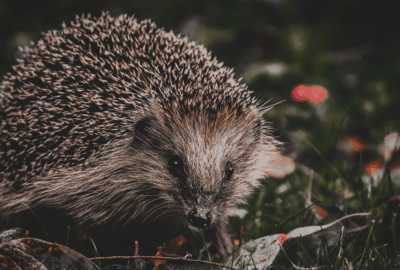
How horny are hedgehogs?
Shh…hedgehog! It always feels like a privilege to catch a glimpse of one, as it snuffles away under the garden fence. And come the spring, our spiny – and usually solitary – little friends will be feeling in the mood for…romance. But what exactly does a female look for in a mate? And how do their intimate encounters even work when things are so very… spiky? Join us for this special Valentine’s Day edition of the Big Questions Podcast, as we ask Dr Sophie Lund Rasmussen (aka Dr Hedgehog) “how horny are hedgehogs?”

Nishant Kumar
I am Nishant Kumar, a Field Biologist exploring how humans and animals co-exist in shared spaces. Specifically, I investigate the evolving dynamics of human-animal relationships in tropical parts of the world, with a focus on the impacts of both accidental and intentional feeding of wild animals (from food waste and ritualistic practices). I look at animals like street dogs, pigeons and monkeys that come into conflict or contact with humans and how that increases the risk of disease transmission across species. I am an India Alliance Fellow (2023 – 2027) at the Department of Biology and Mansfield College at the…

Zoe Brown
Ecologist / Environmental Scientist Hello! My name is Zoe Brown, and I’m an ecologist—which means I study ecosystems (an ecosystem is like nature’s community where—plants, animals, and even the sun—has an important job). I’m working on my PhD at the University of Oxford, studying how we can use and work with nature to help small islands adapt to climate change. My story I was born and raised on Grand Bahama Island in The Bahamas. My dad is from Leicester, UK, and moved to The Bahamas in the 1980s, where he met my mom and never left! When I was 10,…
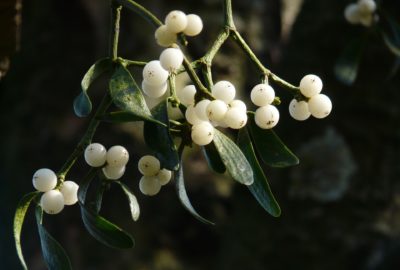
Why track mistletoe?
Mistletoe has long been associated with fertility, and even today, its presence hanging from the ceiling can prompt a few blushes. But, did you know, mistletoe is more than something beneath which to kiss at Christmas? It is actually a parasite, and has some rather peculiar biology behind it. We chat to mistletoe expert Ollie Spacey about what makes it so special, where you can spot it and – importantly – how you can get involved with his research through MistleGO!
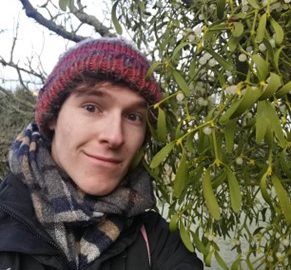
Ollie Spacey
I am fascinated by parasites! After studying Biology as an undergraduate at Oxford, I was most intrigued by how parasites have evolved weird and wonderful adaptations to survive and thrive. Combining my interest in parasites with a love for trees and ecology, I now research parasitic plants which grow on trees–mistletoes! I study how mistletoes spread and co-evolve with the tree hosts they grow on. I’ve launched a citizen science project called MistleGO! which you can get involved in!

Yu Mo
I have lived in Asia, the US, and Europe, working with the remarkably diverse coastal ecosystems of different regions. Coastal ecosystems are vital nature-based solutions for climate adaptation and mitigation, via services such as storm protection, erosion control, and carbon sequestration. However, these ecosystems and their functioning are exposed to increasing human and natural disturbances, such that the long-term dynamics of the ecosystems are often considered one of the most important challenges in developing and managing nature-based solutions. In other words, nature-based solutions must be designed for longevity for optimised performance and maximised benefits. My research tackles this challenge by…
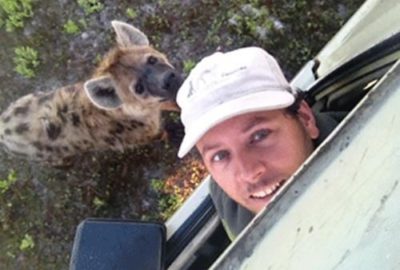
Egil Dröge
I’ve been interested in all things living for as long as I can remember. Fascinated about how all species manage to survive, live alongside each other, and why they live in the areas they live in. I attended Wageningen University, Netherlands, where I did a bachelor degree in Biology, and an MSc in Ecology, and an MSc in GIS. After this I worked for over 7 years in Zambia, for the Zambian Carnivore Programme, to which I’m still attached. With data collected in Zambia, I did my PhD at Montana State University in the US, after which I joined the…
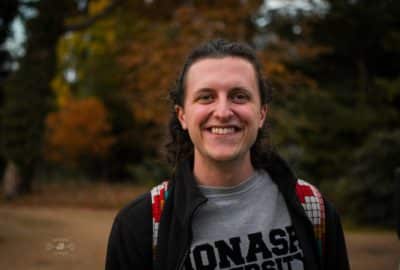
Tom Pavey
There is relatively little research conducted combining studies on the climate and biodiversity crises. As fundamentally entangled areas of science, my research aims to help fill that gap using a mixture of computer modelling and fieldwork data. I look at how big cats are affected by climate change and create projections of how their range and behaviour will shift with increasing temperatures, changing rainfall patterns and more extreme weather events. I work closely with international colleagues, particularly with partners from across continental Africa, to address the challenges facing these charismatic species. Inspired by nature documentaries and a love of felids,…

Marianne Sinka
It took me a while to decide what I wanted to do and I left school without any A Levels. A few office jobs later, I realised that what I cared about was our natural environment and I wanted to understand how it all works and fits together. I returned to college and found myself on an undergrad course studying Environmental Biology at South Bank University. I spent a sandwich year at the Institute of Terrestrial Ecology (now Centre for Ecology and Hydrology), finished my degree and began a PhD at the Centre for Population Biology at Imperial College, examining…

How do you stop megafires?
From California to Greece to Australia, it seems like every time we switch on the news there’s another wildfire report. Some fires are natural – in fact, they’re a fundamental part of many ecosystems – but the severity and frequency of the wildfires we are now witnessing is beyond natural levels. Human-ignited “megafires” are causing devastation across the planet. Climate change and inadequate ecosystem management are key contributors to the problem, but what are the possible solutions? In this special COP26 edition of the Big Questions Podcast, we ask Dr Imma Oliveras all about megafires.
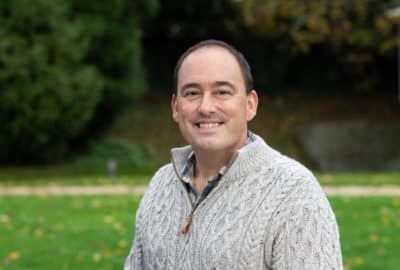
Tim Coulson
Tim Coulson carried out his PhD at Imperial College, London, before conducting post-docs at the Institute of Zoology, London, and the University of Cambridge. He returned to Imperial as a senior lecturer in 2004 and was made Professor of Population Biology four years later. He moved to Oxford as Professor of Zoology in January 2013. Tim’s research focuses on understand how adding or removing predators to systems impacts the ecological and evolutionary dynamics of the affected ecosystem. He develops novel theory, that he then tests with data collected in the field, and from experiments.
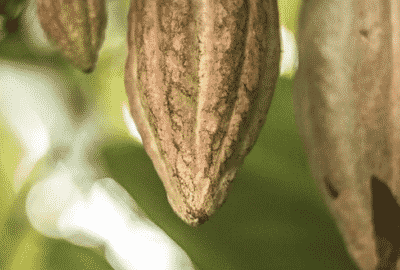
Could chocolate go extinct?
Chocolate. It’s rare to find anyone who isn’t partial to a square or two of this delicious treat. But is its very existence in danger? (*Cue worried faces.*) In this episode of the Big Questions Podcast we chat to chocoholic and researcher Acheampong Atta-Boateng, who studies the relationship between cocoa trees and their micro-pollinators. We hear about how monocropping, pesticides and climate change all pose a risk to the cocoa tree and ask – could chocolate go extinct?

Lockdown Walks – Is this a fossil I see before me?
You find fossils on the beach, right? If you’re really lucky and spend ages looking? WRONG! Fossils – by which we mean the preserved remains of ancient life – can be found all around us! Including, as Matt Sutton tells us, in the centre of town…Make sure you look out for one next time you’re out for a walk around town!
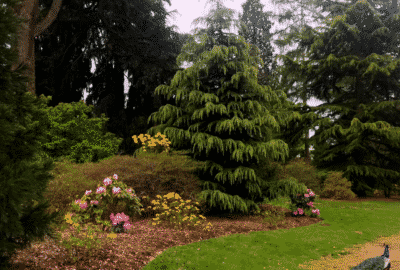
What’s an arboretum anyway?
An arboretum could be described as a “living library”. A beautifully curated collection of woody plants (trees and shrubs) from across the globe, each one carefully labelled and managed. In this episode of the Big Questions Podcast we chat to Ben Jones, Arboretum Curator at the University of Oxford Botanic Garden and Harcourt Arboretum, about what makes an arboretum so special. The Threatened Tree Trail If someone asked you to name an endangered species, what would you say? It’s likely that one or two animal species would spring to mind…the black rhino or the giant panda, for instance. But…
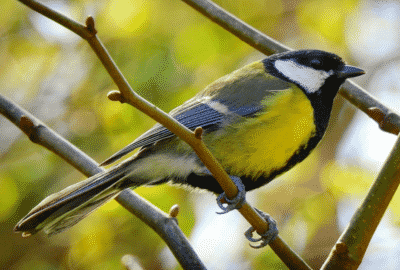
Will climate change kill off the great tits?
Their distinctive ‘teacher teacher’ call is synonymous with British gardens, but great tits are facing a big problem – climate change. As our springtime becomes warmer and begins earlier, peak caterpillar abundance is also shifting earlier. As a crucial food source for great tit chicks, this is cause for concern. In this episode of the Big Questions Podcast, we catch up with ecologist Dr Charlotte Regan, one of the scientists who monitors the Wytham Woods great tit population, which has been systematically studied since the 1960s.
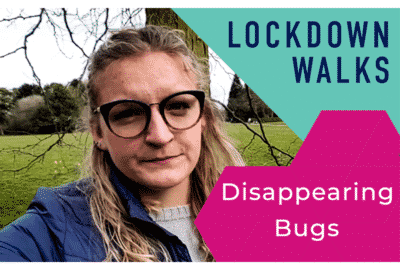
Lockdown Walks – Disappearing Bugs
During Barley Rose’s lifetime, about 75% of the world’s flying insects have disappeared. Join us for this episode of ‘Lockdown Walks’ where she explains some of the reasons behind this loss, and shows you some of the native UK insects that are under threat.
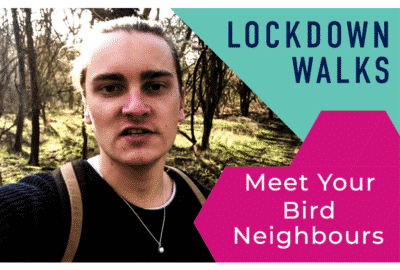
Lockdown Walks – Meet Your Bird Neighbours
How well do you know your bird neighbours? Become better acquainted in this episode of ‘Lockdown Walks’, with Oxford biologist Joe Woodman! Which bird is known for its distinctive ‘teacher teacher’ call? Which bird stays in the UK all year round, bringing us beautiful birdsong even in the depths of winter? Watch and find out!
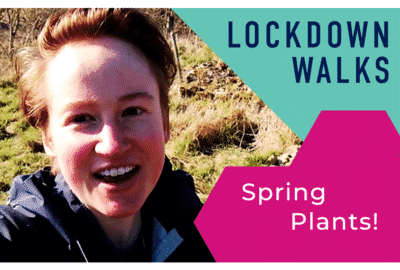
Lockdown Walks – Spring Plants
“Spring has sprung, the flowers are here, but how do they know it’s the right time of year?” If you’ve been out on a lockdown walk lately, you’ll no doubt have noticed that the first flowers of spring have pushed their way through the soil into the sunlight. But how do they know when the time is right? Find out in this episode of ‘Lockdown Walks’, with Oxford plant scientist Emily Warner.
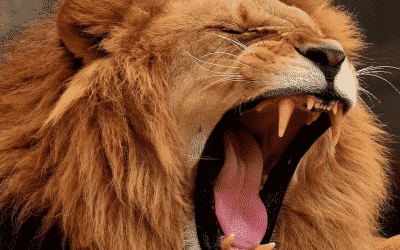
Do all lions sound the same?
If you’ve ever been lucky enough to hear a lion roar (whether that’s at the zoo or in the wild – hopefully at a safe distance!), you’ll know that it’s a truly bone-shaking experience. But do lions have a unique roar, or do they all sound the same? How could knowing this help with conservation efforts? Join us for this episode of the Big Questions podcast as we chat to lion biologist Dr Matthew Wijers – a researcher who has trawled through a whopping 1440 hours of lion audio, all in the name of science!
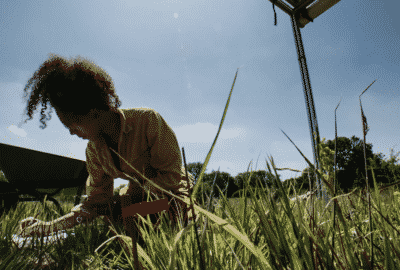
The RainDrop Experiment
How can we predict the future of grassland ecosystems? What’s it like to be an ecologist working in the field? At the moment, we are unable to understand and predict how natural resources will change over time. To try and rectify this, ecologists are setting up field experiments which simulate possible future conditions, in order to see how ecosystems respond. One example is the RainDrop experiment, located at Wytham Woods in Oxfordshire. Here, scientists are using special ‘rainout’ shelters to simulate conditions of extreme drought and heavy rainfall, in order to understand how the grassland ecosystem responds. We catch up…

Should I buy a real or a fake Christmas tree?
It’s that time of year – the festive jumpers are going on, the lights are going up, and we’re ready to decorate our Christmas trees. But when it comes to choosing your fir, what do you go for – real or fake? Perhaps you have a trusty old family-favourite that comes down from the attic each year? Or maybe going to choose a real tree gets you into the festive spirit? Either way, have you ever wondered which is best for the environment? In this episode of the Oxford Sparks Big Questions Podcast, we’re chatting to forest scientist Henry Hung…
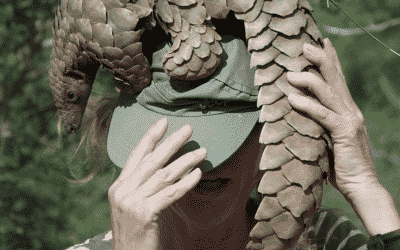
Can celebrities save the pangolin?
‘Influencers’ are here like never before…log on to social media, and there will be someone there to tell you what to cook or what to wear…But what about when it comes to wildlife conservation? For instance, how much impact can a celebrity have when it comes to saving an endangered species? In this episode of the Oxford Sparks Big Questions Podcast, we’re asking zoologist Alegria Olmedo “Can celebrities save the pangolin?”
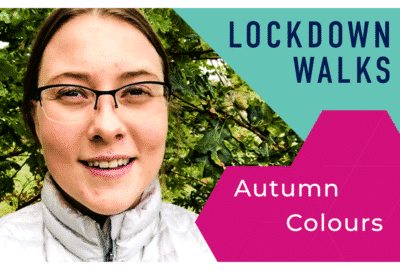
Lockdown Walks – What’s the secret behind Autumn colours?
Woolly jumpers, pumpkin-picking, steaming mugs of cocoa – there are lots of things to love about Autumn (or Fall for our North American friends)! And surely nothing can beat those beautiful Autumn colours? But what’s the secret behind those amazing hues of red, orange and yellow? We all enjoy kicking through piles of crunchy leaves, but why do they fall from the trees? Plant Scientist Morgan Wade reveals all in this Autumnal episode of ‘Lockdown Walks’!

Lockdown Walks – Who’s that American in the woods?
Plant scientist Dr Hayley Tumas is out for a walk in the English countryside…but she’s not the only American in the woods! The Douglas fir has been found in the UK for around 200 years – but how did this huge tree, native to the Pacific Northwest of America, make the jump across the pond? Find out in this episode of ‘Lockdown Walks’!
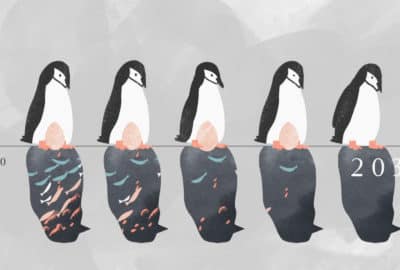
Seabird Monitoring – Witnesses in the wild
Seabirds – including penguins – are amongst the most threatened animals on the planet. They are also very useful indicators of wider environmental change. But how do you effectively monitor species which live in hard-to-reach places, such as Antarctica? A team of scientists at the University of Oxford has come up with a solution: a large network of remote time-lapse cameras, positioned to overlook seabird colonies. The images from these cameras are collected each year, and used to examine parameters such breeding success. To help with the image processing, the photographs are uploaded to two citizen science projects, Penguin Watch and Seabird Watch.…

Lockdown Walks – How can I spot a badger?
Have you ever wondered how to spot a badger? Well you’re in luck! In this episode of ‘Lockdown Walks’, Tanesha Allen shares her top tips on how to find these elusive creatures. Don’t forget to check out the other episodes in our ‘Lockdown Walks’ series, which shows you some of the fascinating science that can be discovered just outside your front door.
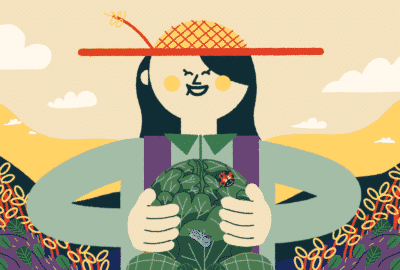
Changing plant chloroplasts to improve crop performance
Chloroplasts are tiny protein-filled units within plant cells. As well as being responsible for photosynthesis, they are critical to a plant’s ability to respond to its environment (for example, to the intensity of light or the threat of disease). They do this by importing the proteins they need – and getting rid of those they don’t need. Scientists at the University of Oxford have been examining this removal system – which they call CHLORAD – and investigating how it might be manipulated to improve crop quality.
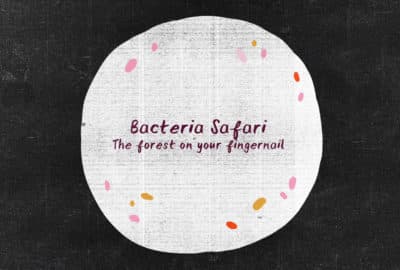
Bacteria Safari: The Forest on your Fingernail
What on Earth can tiny microorganisms tell us about the animal and plant life around us? Bacteria are tiny organisms that exist everywhere; including on us! Watch this animation to find out how studying tiny organisms can shed light on much bigger animals and plants. They are everywhere… Microbes often live in dense and species rich communities. And these communities are everywhere. They are in the soil and on roots where they protect and feed plants. They are in your food; diverse communities make yogurts, cheese and many types of bread and beer. Closest to home, they are on and inside…
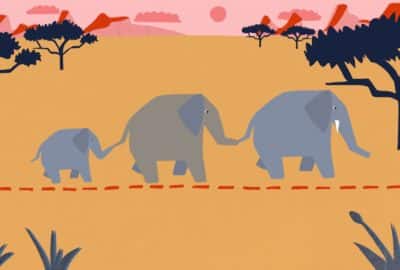
Protecting elephants, protecting humans
How do we find ways for people and wildlife to co-exist? Elephants pose a particular problem as their large size means they need to roam over large areas to find food, water and refuge. The Mali elephants might provide some clues. The problem his remnant population is the northern-most in existence, makes the longest annual migration of all elephants, and has survived when all others around it have disappeared, despite living in a populated landscape with no protection at all. Introduction to the elephant range and the elephants’ world The elephants inhabit the Gourma region of Mali, an area of…

What do water striders have in common with Game of Thrones?
On this episode of the Oxford Sparks Big Question’s podcast we visited Dr Jennifer Perry, evolutionary biologist and entomologist to ask: What do water striders have in common with Game of Thrones? Listen here to find out…. Game of Thrones, the world created by author George RR Martin, has gone from beloved book series to much watch box set. Murder, sex, dragons, incest and a battle for the throne! What more could you want from a TV series? Science of course! There just happens to be one tiny bug that embodies all of these complex relationships we are seeing played…

Should I take a selfie with a wild animal?
Travel companies around the world profit from some of the cruellest types of wildlife tourist attractions on earth. Whether it is riding elephants, taking selfies with tigers, or performing dolphin shows, these activities can cause lifelong suffering for wild animals. In the latest edition of the Oxford Sparks Big Questions podcast, we visit Conservation Ecologist Dr Tom Moorhouse to ask: should I take a selfie with a wild animal?

What do we know about Great Tits?
Professor Ben Sheldon describes one of the World’s longest-running ecological studies, into birds in their natural environments. Starting in 1947, the study of the Great Tit explores basic data including numbers, life spans and productivity from over 1,200 nest boxes.

